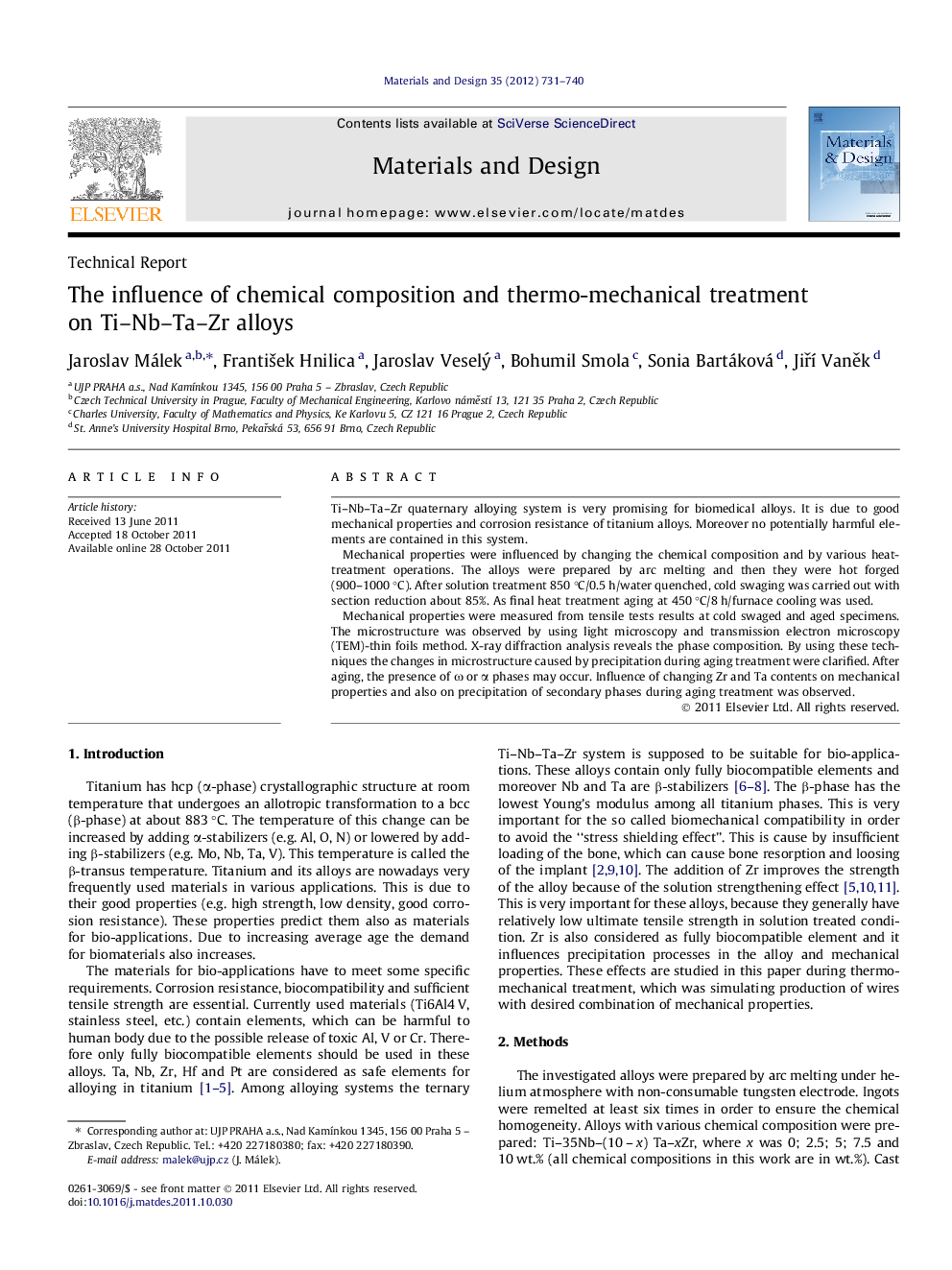| Article ID | Journal | Published Year | Pages | File Type |
|---|---|---|---|---|
| 830996 | Materials & Design (1980-2015) | 2012 | 10 Pages |
Ti–Nb–Ta–Zr quaternary alloying system is very promising for biomedical alloys. It is due to good mechanical properties and corrosion resistance of titanium alloys. Moreover no potentially harmful elements are contained in this system.Mechanical properties were influenced by changing the chemical composition and by various heat-treatment operations. The alloys were prepared by arc melting and then they were hot forged (900–1000 °C). After solution treatment 850 °C/0.5 h/water quenched, cold swaging was carried out with section reduction about 85%. As final heat treatment aging at 450 °C/8 h/furnace cooling was used.Mechanical properties were measured from tensile tests results at cold swaged and aged specimens. The microstructure was observed by using light microscopy and transmission electron microscopy (TEM)-thin foils method. X-ray diffraction analysis reveals the phase composition. By using these techniques the changes in microstructure caused by precipitation during aging treatment were clarified. After aging, the presence of ω or α phases may occur. Influence of changing Zr and Ta contents on mechanical properties and also on precipitation of secondary phases during aging treatment was observed.
► Ti–Nb–Ta–Zr alloys prepared via arc melting. ► Thermo mechanical treatment. ► Microstructural changes. ► Mechanical properties.
